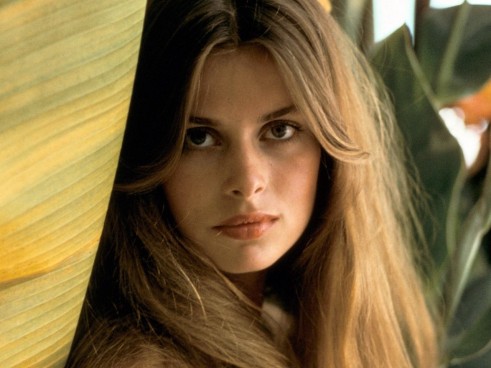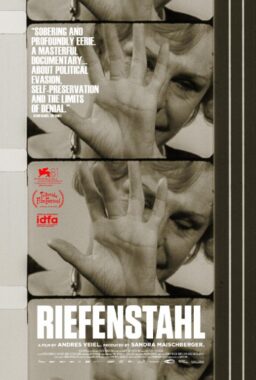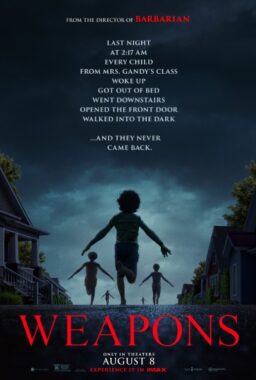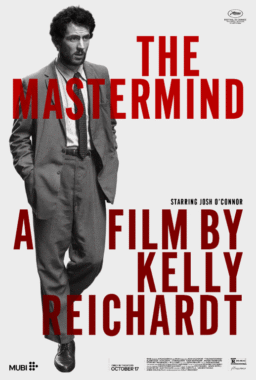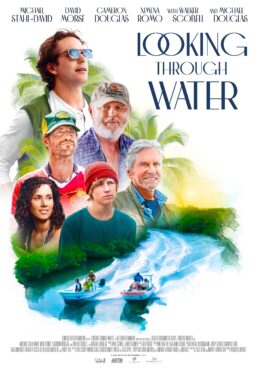I have
spent the last half-hour or so at this keyboard trying to find some subtle or
analytical method of easing into the central thesis of this article but having
failed to do that, I have decided to simply get to the fulcrum of my particular
gist—Nastassja Kinksi is my all-time favorite actress.
This may seem like a bold and potentially questionable opinion to some of you,
but having been mesmerized by her singular screen presence for more than 30-odd
years at this point without having this view shaken in the slightest in that
time, I stand by these words. Her combination of
extraordinary beauty, raw acting talent, pure screen charisma and a facility
for choosing projects that gave her ample opportunities to display those gifts
made her into one of the most electrifying movie stars in the world during the
peak of her stardom in the 1980s and even today, her mere presence alone is
generally enough to make a film worth watching. Put it this way—I even have a
bizarre fondness for the lunacy that is “Terminal Velocity” (1994)
and I assure you that it has precious little to do with Charlie Sheen.
Needless
to say, I am not the only person that feels this way, as many of the films that
she made during her heyday have overcome numerous instances of initial
commercial indifference and have gone on to become cult favorite. To
demonstrate this, the Film Society at Lincoln Center in New York is paying
tribute to Kinski and her work with “Nastassja Kinski: From The
Heart,” a nine-film retrospective running November 27-December 3 that includes
most of the key titles from her long and illustrious
filmography: “Tess” (1980), “One from the Heart” (1982),
“Cat People” (1982), “The Moon in the Gutter” (1983),
“Exposed” (1983), “The Hotel New Hampshire” (1984),
“Paris Texas” (1984), “Maria’s Lovers” (1985) and
“Faraway, So Close!” (1993). In addition to the films, the
always-colorful writer-director James Toback will be on hand on November 28
following the screening of his “Exposed” and Kinski herself will
participate in Q&A’s following the screenings of “Tess” on the
29th and “Paris, Texas” on the 30th. To view any one of these films on
the big screen, to get the full impact of both the work as a whole and of the
actress herself, would be a must-see by itself but to get a chance to
experience them all together must go down as one of the key cinematic
experiences of the year.
How to
explain her appeal to those who are not that familiar with her or her work?
Well, at first, there is her incomparable physical appeal—she could toggle
between innocence and pure carnality in the blink of an eye with a timeless
look that could be absolutely of the moment while simultaneously evoking such
classic screen beauties as Garbo and Bergman. (If nothing else, no one has ever
managed to wear a snake with as much grace and élan
as she displayed in that infamous 1981 Richard Avedon photograph that did as
much as her films to put her into the pop culture consciousness.) Then there
was her equally striking screen presence—a pose at once open and tantalizingly
aloof that set her apart from most other stars of her time and which made them
want to know more. This would have been enough to make for a solid career in
many cases, but Kinski was also a gifted actress who turned in performances that were touching, powerful and hypnotic.

She was
born in Berlin in 1960, the daughter of infamous cinematic wild man Klaus
Kinski, and, at the age of 12, so the story goes, she
was discovered while dancing with friends in a club and cast in her first film,
“Wrong Move” (1975), an early work from up-and-coming German director
Wim Wenders. Over the next few years, she would appear in a few films of the
type that young actresses sometimes find themselves in when first starting
out—the horror epic “To the Devil, A Daughter” (1976), which saw her
appear as a nubile nun alongside Richard Widmark, Christopher Lee and one of
the silliest endings in the history of the genre; the sex comedy “Boarding
School” (1978); and the erotic drama “Stay As You Are” (1978).
None of these films were particularly good or notable but even under such dire circumstances,
Kinski displayed the kind of presence that suggest that bigger things were in
store for her.
That was
certainly the case when Roman Polanski decided to cast her in the title role of
“Tess,” his1979 adaptation of Thomas Hardy‘s classic novel about a
young woman whose life takes a turn for the tragic due to her involvement with
two men—a rake who seduces and abandons her and a nice guy reacts badly when
he learns of her previous indiscretion. At the time that it was being made, the
notion of Polanski (who had initially planned to make the film with his late
wife, Sharon Tate) directing an expensive period piece with a virtual unknown
in the central role struck many as being a potential folly, but it would prove to be one of high points of his legendary
career—a viewing experience of stunning emotional power utterly devoid of the
usual chilly detachment that marked his films. Much of this was due
to Kinski’s incredibly touching work as a woman who, try as she might, is
eventually ground up by the gears of fate for the crime of being an innocent in
a world where that quality alone is enough to make one a target.
“Tess” made Kinski into a star, and to follow it up, she came to America
to work for Francis Ford Coppola on his follow-up to “Apocalypse
Now,” an intimate romantic musical drama about a couple who break up, find
new partners and come back together again over the course of the July 4th
holiday called “One from the Heart.” Coppola, who had just launched his dream of running his own
studio, got caught up in the technological advances of the day and decided
to apply them all to this project, including recreating the Vegas strip on
sound stages and directing from an Airstream trailer tricked out with all the
latest gadgetry that he believed would streamline the filmmaking process. As a
result, the budget spiraled out of control—all of which was recorded by the
press in gleeful detail—and when it finally opened in February 1982, it was a
flop that nearly bankrupted Coppola and kept him churning out one film after
another for the next decade to get out of his hole.
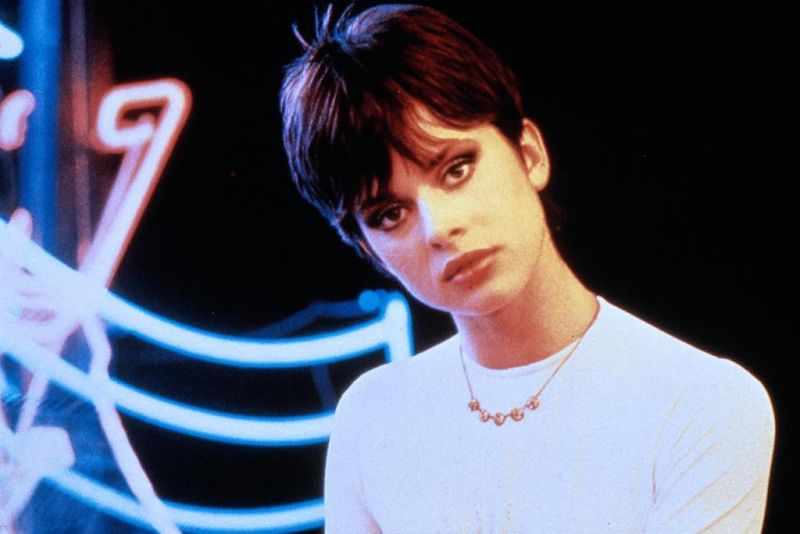
The punchline, however, is that the film
itself, divorced from its budgetary problems, is an absolutely glorious work of
pure cinematic style that offers viewers some of the most stunning sights
imaginable. Among them, of course, is Kinski, who portrays a circus performer
who becomes the obsession of the newly free Frederic Forrest while representing
new romance in all its glitzy allure—the sight of her cavorting inside of a
giant neon martini glass is just one of the spectacular images on display
here—and while the role itself may not be all that much to speak of, she
manages to pull off beautifully, both the fantasy girl that lights up the night
like a million-watt bulb and the real person that remains the next morning.
From
there, Kinski moved on to “Cat People,” Paul Schrader‘s 1982 remake
of the 1942 Val Lewton horror classic that, even more than 30 years after its
release, remains such a singular work that it boggles the mind that a major
studio would have dared to put it into production. A serious-minded and
decidedly adult fairy tale about a virginal young woman who learns from her
brother (Malcolm McDowell) that they are descended from a race of human-panther
hybrids doomed to revert to their murderous feline state while making love to
anyone outside of their own bloodline—a problem as she has just fallen in love
with a sweet-natured zookeeper (John Heard) who specializes in big cats—this
is a film swimming in sex, violence, poetry, philosophy and swanky visuals in
such extremes that it always seems to be on the verge of becoming utterly
ridiculous but it somehow never goes over the edge into camp because of
Schrader’s serious-minded handling of the material; it may be nonsense but he
never treats it as such. As for Kinski, her innocent allure (or is it her
alluring innocence) and offbeat presence never had better vehicles than this
film. To perform such erotically-charged material, especially when one has to
convincingly suggest that they have an actual feline presence inside of them,
would challenge the best actresses and to this day, I cannot think of anyone
who could have pulled off the part as well as Kinski does.

Thanks to
films like this, Kinski found herself in the odd position of being one of the
leading sex symbols of the age that was further solidified through her
appearances in the 1983 films “The Moon in the Gutter” and
“Exposed.” In the former, she returned to Europe to work with French
director Jean-Jacques Beneix (making his followup to the international hit
“Diva“) on a noir-influenced melodrama, based on a David Goodis
novel, about a dockworker (Gerard Depardieu) obsessed with getting revenge on
the man who raped his sister and drove her to suicide and the new woman in his
life (guess who) who may hold the key to either his salvation or destruction.
In the latter, she came back to America to star in writer-director James
Toback’s wild tale of a midwestern girl who becomes an international supermodel
and finds herself caught between a romantically obsessed concert violinist
(Rudolph Nureyev) and the Carlos the Jackal-like international terrorist
(Harvey Keitel) that the violinist has vowed to destroy.
Both
films tell flamboyant stories of obsession and revenge—Beneix through his
super-stylized visual palette and Toback through his equally audacious flair
for dialogue—and both films contain the two most singularly erotic moments of Kinski’s
entire filmography, all the more impressive because they don’t actually involve
nudity. In the former, the moment in which she makes her first appearance is a
literally breathtaking moment that is perhaps equaled only by Grace Kelly’s
similar entrance in “Rear Window.” In the latter, there is a sex
scene in which Nureyev literally plays her with his violin bow that is simply
without precedence. (Toback, a raconteur of the first
order, has a great story of how this sequence came to be and while it cannot be
printed here, perhaps if you ask real nice during the Q&A, he will tell
you.)

To be
honest, most of the aforementioned films, with the exception of
“Tess,” received mixed receptions from critics and audiences alike
but that was not the case with “Paris, Texas,” the award-winning 1984
drama that reunited her with Wim Wenders for the first time since “Wrong
Move.” In it, the great Harry Dean
Stanton plays an amnesiac drifter who, as the story opens, turns up
unexpectedly after being gone for years and attempts to forge a bond with the
young son (Hunter Carson) he barely knows, and reunite with the wife (Kinski)
who left them both. Towards the end, he finds her working in one of those weird
sex clubs where you pay to look at the woman through a window, though she
cannot see you, while talking on a telephone. In a long and painful scene, he
begins to tell a story as she gradually begins to recognize who is on the other
end of the line and the result is one of the most moving and powerful scenes
that I have ever seen in a film thanks to the performances of Stanton and
Kinski, who manage to forge a powerful connection in these brief moments
despite their figurative and literal separation. It is, in fact, the single
best bit of acting that she has ever done on screen and shows what she truly
was capable of as a performer.
At this
point, alas, Hollywood began to move on to whoever the next big thing was and while
Kinski would continue to work steadily, oftentimes in Europe, the projects were
often a step down in quality—an unnecessary remake of “Unfaithfully
Yours” (1984) here, the disastrous Revolutionary War epic
“Revolution” (1985) there—but there were still interesting projects to come. “The Hotel New Hampshire” (1984) was an adaptation of
the John Irving best-seller about the trials and tribulations of a quirky
family in which she played a lesbian acquaintance, and lover to siblings Rob
Lowe and Jodie Foster, who spends almost all of her time in a bear suit—more
than other Irving adaptations, this one best captures the author’s unique and often infuriating
tone and oddly anticipates the films of Wes Anderson in certain ways.
“Maria’s Lovers” (1985) tells the
story of a mentally scarred WWII vet (John Savage) who marries his childhood sweetheart (Kinski) but has
obsessed over her for so long that he is now psychologically unable to
consummate the union–this was a rare opportunity to see her in the role of an
utterly normal and relatively deglamorized person and she managed the task of
going from extraordinary to extra-ordinary. In 1993, she would even reunite
with Wenders for a third time in “Faraway, So Close!,” the sequel to
his 1987 cult classic “Wings of Desire” that found her in a
supporting role as a trenchcoat-wearing angel bearing witness on the denizens
of a newly-reunited Berlin—although the crackpot plotting would earn it mixed
reviews, the eclectic cast (including the likes of Peter Falk, Willem Dafoe,
Lou Reed and Mikhail Gorbachev) and the look of Berlin after the fall
definitely make it worth reexamining.
Since
then, Kinski has continued to work, though more often than not in Europe, and
while many of these efforts have either been forgettable or never even appeared
on these shores, there have still been some interesting moments along the way.
She was good as one-half of the extramarital affair at the center of Mike
Figgis’s “One Night Stand” (1997). and found herself enmeshed with many
of the awful people at the center of Neil Labute’s brutal “Your Friends
and Neighbors” (1998). She gave one of her very best performances in
Michael Winterbottom’s “The Claim” (2000), another
adaptation of a work by Thomas Hardy. In “An American Rhapsody,” she
was touching as a Hungarian refugee in America struggling to reconnect with the
daughter (Scarlett Johansson) that she had to leave behind initially when she,
her husband and other daughter were forced to flee. She even cropped up in, of
all places, the last few moments of David Lynch’s surreal epic “Inland
Empire,” adding one last enigmatic touch to a film and a career filled
with them.
Hopefully with the advent of events like the
Film Society retrospective, some of today’s filmmakers will become duly
inspired enough to put her into their own works and add a new chapter to a
story so sensational and striking that if Hollywood were to one day make a
movie of her life, she is the only person around who could conceivably do it
justice.
For more
information on the “Nastassja Kinski: From The Heart” retrospective,
including screening dates and times, go to the official site.
Below,
Nastassja Kinksi, through the miracle of email, chimes in with some thoughts on
a couple of her most iconic performances.
“TESS”
Did I
feel [intimidated by being the center of such a big film at a young age]? Well,
yes and no. Yes, because it was as you say, a classic book and one of the
biggest directors, but the role was my age and reading the book again and again
replaced most of my being intimidated. Also, I was trusted by my director, who
had done such amazing work with films we will never forget and who was so
hardworking and serious. He worked mostly with the same team that loved him and
if I was trusted to take on this role by him, then I would have to trust myself
too, since I trusted and admired and adored him.
I was
given the book almost a year prior to read, I then had to transform myself and
lose my German accent completely. I worked with a coach from the National Theatre
in London, Kate Flemming. It was almost an intellectual voyage.
I went to
live in the countryside of the deep part of England, on a farm, did everything
they did, and learned it. When the time came in Paris to do my test, it was
with our director and our producers Claude Berri and Timothy Burrill, I had
done a screen test with Roman prior to that, for Dino DeLaurentis, but now this
was for “Tess.” Preparation is an amazing thing. It, somehow, after
all the work, carries you if you are fully present, it carries you through like
a bird, like big inner and outer wings.
The other
very intimate and personal treasure I felt inside was that I knew Roman wanted
to do this film with Sharon Tate and it was dedicated to her. I kept seeing her
beautiful face in front of me, accompanying me silently. It was a labor of
love—this film, the entire crew, the feelings and big nature,everything about it. It helped me grow and be out in the
world, it was my step into being an adult, and seeing the world.
Well when
it is based or from a book, especially a famous writer such as Thomas Hardy,
yes one feel very much wanting to do it as written, respecting of course the
book, it is also nice because one can read it and read it, and it accompanies
you and helps you, I love doing films from a book, anyway one has one’s own
feelings in it too.An original screenplay of course is just as important, maybe
there one has more freedom to improvise. Tess, well I knew that it was from a
famous book, I knew that this director was another dimension, a larger bigger
stronger dimension then I had worked with and seen, like a very big sky, like a
open sea, a endless field, a endless sunset, sunrise, a feeling that big, that
I felt.
When it opened in Cannes, it was my first time
in Cannes, I was 18 and Roman and Claude the producer said ‘ this is going to
be an important time for you, like growing up, be strong, and know we are all
in this together, and choose well. And it was true, I felt it, and I felt we were
in this together, us the cast, our director, our team.Like the feeling when you
do a play, and in the end the cast comes out and everyone hold hands and bows,
it’s true, we are in this together, that is the best feeling. Everyone for him
or herself, yet we are in this together, creating something
beautiful, meaningful.
“ONE FROM
THE HEART”
I always
thought how lucky I was to even meet this amazing director, Francis Coppola. We
all met in Cannes—Francis was in Cannes with “Apocalypse Now” and
won, along with “The Tin Drum,” and we were there opening the
festival with “Tess.” Claude Berri, the producer of Tess, and his
wife, Roman, Volker Schlondorff and there was Francis with his wife Ellie and
all his amazing kids, little Sofia, Geo and Roman, Sofia and Geo’s brother. We
all met on a boat and on it played “Blue Skies” by Willie Nelson,
that is how we all met.
Once I
was in New York, I met Francis and he said he wanted to do this film like a
fantasy and asked if I was ever involved with a circus. I said yes—actually,
twice. Once I performed at maybe 12 with an elephant and once through my mom’s
friend, who trained tigers. He cast me
with Teri Garr, Raul Julia, Freddy Forest and Harry Dean Stanton. We were to
all stay together and practice—we were like a theatre group, all of us always
together. We all had our things to learn—trapeze, high-wire, tango, singing,
all in a fantasy light and world—looking for love in a Vegas setting, and
finding, even in an extraordinary frame, how simple and basic all our needs are. But yes it was like a fantasy he had—after
doing these big amazing films that we know, he wanted to do a story about
fantasy and love and it was like that for all of us actors who were involved in
it.
“CAT
PEOPLE”
Well,
first of all, it was Paul Schrader’s film, a writer that I got to know through
seeing Scorsese’s amazing films—”Taxi Driver,” “Raging Bull,” films I saw many
times. My love for animals, and that animal side inside of us. When or how would
I ever be able to be that close to panthers, those big cats that belong to the
wild, yet are only for us to see in zoos, sadly? How would it be to interact
with them, and touch them and be so close to them? That to me was beautiful,
like a dream. I loved, of course, working with the actors—Malcolm, John, Ruby Dee, everyone.
It was
also haunting, going deep into the unknown. Paul Schrader was a quiet and great
writer, and now directing this inner journey of animalistic love and dreams and
forbidden sides of us. People trapped in an animal they could not escape, or
vice versa. I really do love the last scene, where Irena becomes the panther,
forever, and the zookeeper whom she loves is her caretaker, her love, and she
his.
David Bowie‘s song, that too, How else would I
get to meet David Bowie, and have
a song in a film I am in by David Bowie? That was just a fantasy and Giorgio
Moroder’s score…Music was major in this film, it almost accompanied the
entire film, like a dream, a fantasy.
ON HER CRITICS
Well, it is always amazing when one gets an interesting and good review,
especially if the film and work means something to you. If you did a lot of
research and you worked on it and love it, of course, it matters. Then again, if
it matters too much, that’s not right, because if you believe in something you
should stand by it in any weather, I think. At times, it affects you, but, again, one has to be just true to one’s
self and do one’s best with your heart, always.

